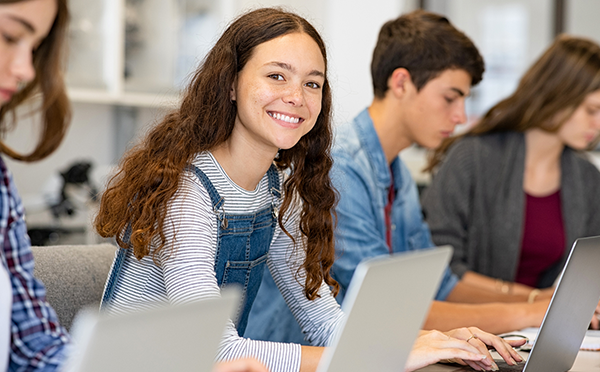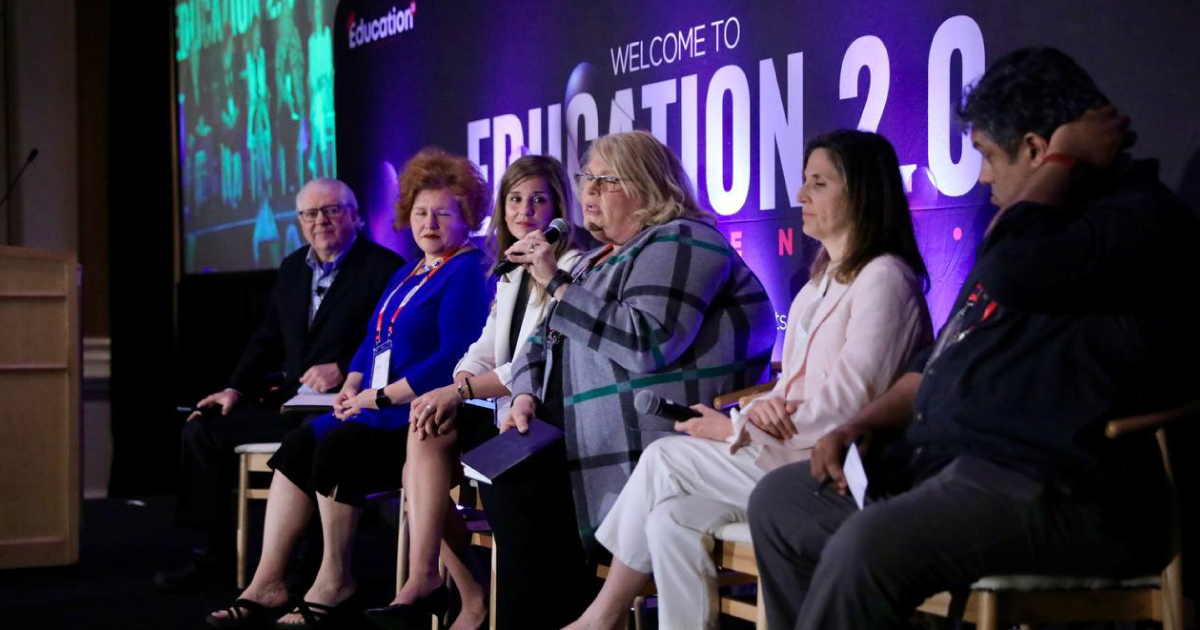"Each to his own" is an apt phrase when it comes to learning and education. Text and technology play a prominent role in modern educational setups. But students need more than books and screens to learn.
Physically Activity Learning (PAL) in the school curriculum is an innovative educational strategy today. Many education events in Vegas, like the Education 2.0 Conference, suggest that it may revolutionize the face of education in years to come.
Fusing movement and physical activity with conventional classroom instruction can have manifold benefits. It can have a positive impact on performance. Research suggests that including physical exercise in education may enhance academic achievement. This approach works well in a variety of educational contexts.
U.S. educational institutes are gradually recognizing the importance of active learning in their curriculums. Here, you will read about the features and advantages of physically active education. Insights from the top education events of 2023 about its future are also discussed in detail.
What Is Physically Active Learning?
Physically Active Learning incorporates movement and exercise into the teaching and learning process. It is an innovative educational strategy that has proven effects on cognitive function. PAL enhances memory, attention, and problem-solving abilities.
Books can get repetitive for children. Brimming with energy, students need a kinesthetic outlet too. PAL provides a more engaging and exciting learning environment. This has a direct impact on the academic performance of students and their well-being. Post-COVID educational conferences in Dubai reveal that mathematics and reading are the academic topics that are most influenced by physical activity.
How Does PAL Integrate Into Education Setups?
PAL activities can take many different forms. These include simple movement breaks to full-scale movement-based lessons. For example, teachers can incorporate stretching, yoga, dance, and sports into their lessons. This can help to break up periods of sitting and improve student engagement. Besides, some schools are using standing desks or adjustable desks. This allows students to alternate between sitting and standing during the day.
Subjects like math and science can also incorporate PAL. This can include activities that involve physical movement and problem-solving. For example, to solve math problems, students can jump or hop on a number line. This way, they can show concepts such as force and motion in science. This will enable the concept to become fixated on long-term memory, improving memory span.
Integrating PAL into the curriculum does require some planning and coordination, but it can be done with the help of teachers, parents, and school administrators. The Education 2.0 Conference shares insights about ways to incorporate PAL in common academic settings. By creating a more dynamic and engaging learning environment, PAL has the potential to enhance students' academic performance, promote their overall health and well-being, and set them on the path to success both in and out of the classroom.

The Benefits of PAL In School Curriculum
Educationalists recognize the importance of physical activity in promoting health. Educational enthusiasts at recognized education events in Vegas share their perspectives on it. According to research, PAL can have a positive impact on student behavior. As a result, many schools are now integrating PAL into their curriculum. The purpose is to provide a more engaging and effective learning environment.
The benefits of PAL are manifold:
-
Improved Academic Outcomes:
Aerobic activity enhances task-related memory span. Much research has been done on the same. Added benefits of active learning include:
- increased retention of information,
- improved performance on tests, and
- increased engagement with the subject matter.
By incorporating physical activity into the learning process, PAL can help students to better absorb and retain information.
-
Increased Student Engagement:
PAL provides an opportunity for students to learn through movement and physical activity. This makes the learning experience more engaging and stimulating. This can help to reduce boredom and disengagement in the classroom. Resulting in increased student motivation and enthusiasm for learning.
-
Enhanced Physical Health and Well-Being:
Regular physical activity has been linked to a range of health benefits. These include -
- improved cardiovascular health,
- decreased risk of obesity, and
- improved mental health.
By integrating PAL into the curriculum, schools can promote healthier lifestyle habits. It can also help students to develop lifelong physical activity habits.
-
Reduced Behavioral Issues:
Students who are physically active tend to be more focused. They are better-behaved in the classroom. PAL can tackle behavioral issues such as restlessness, inattention, and disruptive behavior. Physical activity is known to have positive impacts on physical and mental health.
Top education conferences in 2023 have suggested the target age group for PAL. Researchers reveal that PAL must rise, especially in children and adolescents.
Promoting Holistic Education:
Physical activity, both in short bursts and over time, enhances mental function. It supports the development of the whole child. This includes their physical, cognitive, and social-emotional development. By integrating PAL into the curriculum, schools can promote a more holistic approach to education.
The foundation of academic performance is an executive function and brain health. Learning is facilitated by fundamental cognitive processes related to attention and memory. Exercise and greater cardiovascular fitness have a positive impact on these functions.
Physically Active Learning In U.S. Schools-
Physically active learning has gained momentum in the United States in recent years. Educators and Policymakers realize its importance. They recognize the benefits of integrating physical activity into the learning process. As a result, they have adopted PAL in elementary and high schools and even universities.
- U.S. school schedules include PAL activities. These include recess, P.E. classes, or short movement breaks during academic sessions. Some schools have also integrated movement into the subject matter. For example, students may use physical movement to explore concepts like geometry. Or even use dance to express themselves in art class.
- After-school programs have also integrated PAL. Here, students can take part in activities such as dance, yoga, or team sports. Various post-COVID educational conferences in Dubai discuss the advantages of such adaptation. These programs provide a structured environment for students to engage in physical activity. This promotes not only physical health but also social-emotional well-being.
- CDC ( The Center for Disease Control ) has also endorsed PAL. This is a strategy for improving student health and academic outcomes. The CDC provides guidance for schools and educators on how to implement PAL in the classroom. It leverages resources and recommendations for physical activity incorporation in classes.
- PAL has also gained recognition at the policy level. For example, federal education laws have also added to the movement. Every Student Succeeds Act (ESSA) includes provisions that encourage schools to add PAL to their curriculums.
PAL is gaining momentum in the United States as a promising approach to promoting student health and academic success. As schools continue to integrate PAL into their curriculum, there is potential for a widespread positive impact on student outcomes and overall well-being.

Factors Influencing PAL Adoption In U.S. School Curriculums-
This form of learning has gained popularity in recent years. It is a means of promoting health and academic outcomes for students. The extent to which U.S. school curriculums will adopt it will depend on a variety of factors. According to renowned education events in Vegas, these factors include -
- Policy support:
State and District policies can play a significant role in promoting PAL in schools. If employed well, these policies may increase the likelihood of PAL adoption.
- Funding:
Schools may need extra resources to implement PAL. These include equipment and training for teachers. Adequate funding may be a significant factor in whether schools adopt PAL.
- Teacher enthusiasm:
The support of teachers and their enthusiasm is critical to PAL implementation success. Since teachers will propagate its adoption, their skills, and motivation are essential. It may be challenging to put PAL in place without their discretion.
- Community support:
Community members, such as parents, may have an impact on whether schools adopt PAL. If they are supportive of the idea and see its benefits, they may be more likely to advocate for it in their schools.
- Research and evidence:
Research and evidence also govern whether U.S. school curriculums will adopt it. The more evidence there is supporting its effectiveness, the more likely its integration.
These factors influence the adoption of PAL in U.S. school curriculums. But its potential benefits outweigh them in number and intensity.
Does Physically Active Learning Have Downsides?
Physically active learning (PAL) is an innovative approach to education. While there are many benefits to PAL, there are also some issues that should be considered. Education events in Vegas highlight these issues as-
- Safety concerns,
- Lack of space or resources,
- Unequal opportunities for disabled students,
- Effective curriculum alignment
- Time constraints
- Lack of trained teachers
It is important to consider and address these potential issues. By doing so, schools ensure that PAL is implemented safely, effectively, and inclusively.
Bottom Line
Education is advancing in countless domains. The inclusion of a physically active mode of learning adds to its development. The Education 2.0 Conference shares insights about the modernization of education today. It is an ideal platform for academic minds to learn and share new perspectives in the field.
















